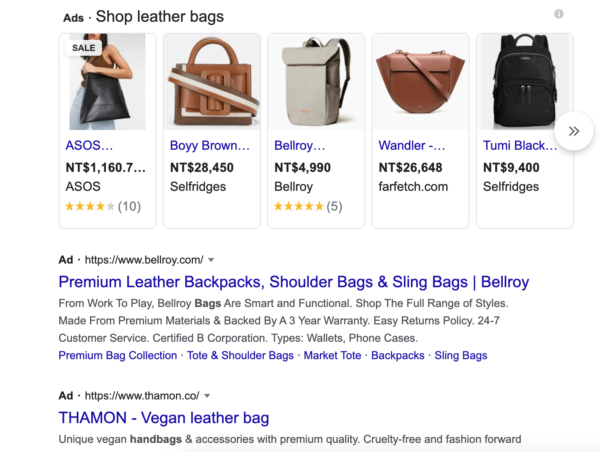
When running pay-per-click (PPC) ads, the metrics you receive after a campaign can be a little overwhelming. One of these metrics is the click-through rate (CTR), reported as a percentage, which can measure the success of your ad efforts.
What is click-through rate? The “clicking-through” refers to when a user sees your ad (also called an impression) and then clicks and ends up on your landing page. It’s one way of measuring interest in what your ad is offering. If the user only saw your ad and moved on, it would count as an impression but not as a click-through.
Though high CTR is what lots of companies strive for (especially those that charge per click), you don’t have to make it your main goal. After reading this post, you’ll not only understand CTR better but also have some ideas for optimizing it. We’ll go through what a click-through rate is, what a good CTR is, why it’s important, whether high CTRs are good or bad, and how to improve yours.
What is click-through rate?
The click-through rate formula is the number of clicks on an ad divided by the number of times the ad is shown.
CTR = (clicks/times seen)
What does CTR mean? What it says about your campaigns is a story that can’t be told with formulas. In PPC advertising, your click-through rate measures how relevant those who saw the ad thought it was to their search. Essentially, it’s how well the ad matched what they were looking for.
What does this look like in real life? Let’s go through a couple of examples of high and low CTR, using you as our web surfer. You’ve just learned about a new fruit and are researching it online. You type “dragonfruit” into a search engine and see an ad for dragonfruits that are now being sold at a grocery store near you.
But your search intent is informational, and what you want is a Wikipedia page for “dragonfruit.” The ad doesn’t match your intent, so you won’t click it. That makes the grocery store’s CTR go down. What it offered was irrelevant — not what you were looking for.
On the other hand, if you’ve been interested in a particular brand of hair products and search it by name, you will likely come across at least one PPC ad for the brand. If you click on it, the brand’s CTR will go up. The ad is relevant and well placed, and it suits your search intent perfectly.
This isn’t to say that you should always use brand-name PPC ads and avoid vague or generic ads for, say, “shampoo,” but it gives you a rough idea of what CTR can look like in either case. Now that we understand what CTR is a bit more, let’s look at high versus low CTR.
What is a good click-through rate?
A good CTR is different not just for every campaign but also for every industry. What is a click-through rate that deserves a high five? According to Wordstream, the average click-through rate across all industries is 1.91% for the search network.
Digital marketing researcher Dr. Augustine Fou says the only number you should compare your CTR with is your own organic traffic click-through rate. You can find this on Google Search Console. Strive to match that organic CTR — or aim even higher — with PPC to measure your ads’ success.
Why are click-through rates important?
Why is CTR important as a metric? It can give you a pretty good idea of whether your ads are working for searchers and if those searchers are your target audience.
A low CTR doesn’t necessarily mean your ad copy, sales offer, or campaign as a whole is faulty. What may be faulty is your targeting. Does your ad match your customer’s stage in the journey? Look back at your customer journey, or map one if you haven’t done so already.
In the end, your CTR affects traffic to your website, so you should find out what affects your CTR. Its effect on traffic, however, is not the only reason CTR is important.
What is click-through rate impacting on your website?
What is click-through rate’s impact on and off your website? Let’s talk about ad rank and why it’s important. Ad rank is the position your ad occupies on paid search results.
In the illustration below, the term “leather bags” was searched on Google. Bellroy’s ad occupies the first “Ad” ranking, and Thamon occupies the second. What gives each ad its position?
And what is click-through rate’s role in ad rank? Some will say that rank depends on ad spend alone, but that’s not how it works. Google Ads performs a lot like organic search within its auction process. After all, it still wants to suggest the most relevant and helpful page, even if that page is sponsored.

How does Google determine that No. 1 spot? There are several factors that go into this, one of which includes your CTR.
- Bid: whether your ad reaches the minimum for that search term
- Quality: a score based on CTR, relevance, the quality of your landing page and ad text, and how well your other ads have performed historically
- Context: devices users search on, the time of day, and the terms they use
- Extension Impact: whether the ad proved to be relevant by maintaining or increasing the normal CTR for the search term
So what happens if you are constantly running ads that don’t have great CTR? It’ll affect your quality score, and your ads will have a harder time ranking first on the paid results. Your CTR may not be important for every single campaign, but you may be hurting your business in the long run if you’re not running relevant ads that are up to Google Ads standards.
Is a high CTR good or bad?
Despite all that you’ve read here so far, the answer is that it depends. Does that sound like a cop-out answer? Well, when you are paying for every click, you don’t always want a high CTR.
Why? It’s because CTR isn’t usually the only metric to take into account in a campaign.
For example, your ad may say you’re giving away a product. In this case, we’ll assume that would bring in a high CTR. If the ad doesn’t mention that the free product comes only after you buy one first, you might get a low conversion (when a user completes a desired goal, such as a purchase), and not sell much at all.

So high CTR doesn’t always measure success. Then what is click-through rate good for measuring, if not success?
Types of campaign goals and key performance indicators (KPIs)
Ad campaigns serve a variety of purposes. Sometimes you’ll want to get more brand awareness. Other times, you’ll want to promote and sell a specific product or service. For each campaign, your KPIs will vary.
If all you want is for people to be aware of your brand, a high CTR alone can be a good early sign. People are finding you and clicking your ad to see more. But here’s the kicker: If all you’re getting is a high CTR but no sales from your ad campaign, something is not, well, clicking for the customer. Maybe you charge a price they’re not willing to pay. Perhaps your payment platform is flawed.
Regardless, what you need are actual conversions. Look to your conversion rate (CVR) as an indicator that your campaign is doing what you expect.
If your CTR is on the low side but your CVR is high, definitely celebrate!
Both high and low CTRs have their benefits. It all depends on what kind of campaign you’re running.
How can I optimize my CTR?
So, despite CTR not always being the most important metric, we think it’s pretty significant. What can you do to drive higher CTR? Let’s go through some options so you can gauge what’s best for you.
Increase your bid
We had to put this one on the list because you’ll likely be competing with some large bidders for important keywords. Increasing your bid will likely get you ranked higher (though it’s not guaranteed). This may drive up your CTR by making your link easier for viewers to reach.
Stand out with your CTA
Consider making the offer so tempting that viewers can’t help but click that CTA. Furthermore, make it match both what you’re promising and what they’ll see when they click. You can use CTAs like “buy now,” “learn more,” or “sign up,” to name a few.
Use a location extension
A location extension allows you to add your business address to your ad. This benefits you in several ways. For one, it gives your business credibility by showing potential clients that you have a real-life, brick-and-mortar location. For some customers, that legitimizes your business. Additionally, it lets local searchers know that you’re right in town and can help quickly.
Add your keyword to the display URL
A key to making the most of PPC ads is taking advantage of every tool that Google Ads gives you. This includes your display URL. Optimize the display URL to include your main keyword, and you’ll be surprised what a difference it can make in your performance. Just be sure to keep it within the 35-character limit.
Use cost-effective terms
Sure, sometimes you’ll have to go after competitive keywords, but don’t underestimate just how much CTR low-competition terms can deliver. Use your quality score to your advantage, assuming that you have a decent one, and put it to work on cost-effective terms that are still relevant to your business or product.
This can mean long-tail keywords and trying to rank No. 1 for paid search. How can you do that? As an example, you can go for “Affordable House Sitting Vermont” instead of plain “house-sitting service,” which will be much more competitive and likely less effective.
Go mobile-responsive
You often hear about how important it is to make your site mobile-responsive, but most businesses assume they’re still getting desktop visits. While that may be true, smartphone search is quickly taking over, with mobile accounting for about 59% of organic search visits.
So if you’re not optimizing your landing page for mobile, you’re missing out on a large share of that search. Smartphone users will not click-through and will abandon their visits. And Google may choose to not show your ad at all.
Optimizing for mobile is more than just an extra step to gain a few more clicks. It’s a necessity.
Don’t sleep on the copy
With PPC ads, your copy provides a potential customer with the first impression of your business. So your grammar, punctuation, and word choice should be flawless. Anything less than perfect can delegitimize what you offer.
But good punctuation and grammar are just the first step and won’t be enough. You must speak your target audience’s language, using their words or expressing their frustrations so they feel seen and understood.
Make your copy compelling and convincing, and you’ll see your CTR rise. Don’t stuff keywords in your ad text, but make sure to include the target term and other terms that are most relevant.
Start increasing your click-through rate and sales
We’ve gone through what click-through rate is, why it’s important, and whether high CTR is good. We’ve also provided several ways you can try to increase your CTR.
With all this information you’ve gathered, you can assess what your PPC ads need, how they’re performing now versus how you could optimize them, and how to increase your quality score by improving your CTR.
Knowing what you know now, you’re ready to start increasing sales and converting more by getting people to click through to your website. Get started by finding those cost-effective terms in your industry. You now have all the tools you need to turn those into an ad with a great click-through rate that will bring in business for months to come.




